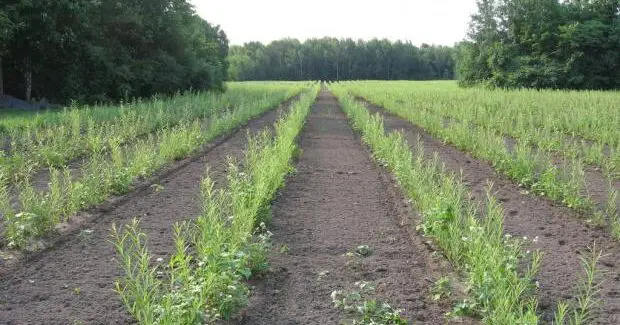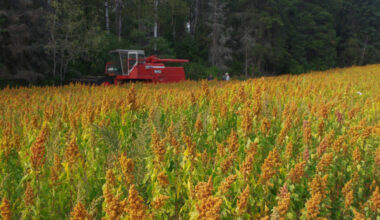The pussy willow is a fast growing tree with a high water requirement. It also needs a well-spaced, sunny and moderately windy garden. It is not high maintenance, but it does need to be pruned for a pleasing weeping habit.
If you have a large garden, we recommend this tree for shade and a melancholy touch.
Contents
When and where to plant the willow?
For a pussy willow to thrive properly in the garden, several conditions must be met. Among these, we can mention the quality of the soil. In fact, it is ideal to plant a pussy willow in a fresh and humid soil.
Indeed, the pussy willow develops better in the presence of water. This is why they are usually planted near a river or pond.
The pussy willow also appreciates exposure to the sun. It is therefore necessary to find an isolated, sunny and slightly windy location. Exposure to the sun is one of the criteria that activate the flowering of the pussy willow.
However, a semi-dark exposure is also tolerable. It blooms mainly in summer and its planting is recommended between September and October.
Planting willows in the fall is preferable to ensure deep rooting before facing the summer drought.
Planting the Pussy willow
For enthusiasts and experienced gardeners, growing a pussy willow from a cutting is possible. If you know someone who owns this tree, you can take a few twigs of 12 inches in length, place them in pots with a good soil mixture and water them periodically. Currently, this is the cheapest solution.
However, pussy willow seedlings are available from garden centers. You can then plant them directly in the garden. To do so, here are the steps to follow:
Prepare the soil
Dig a hole one meter in diameter and one meter deep in the desired location (a secluded, sunny spot, slightly sheltered from the wind). Add organic fertilizer to the bottom of the hole to ensure the growth of the pussy willow.
Staking and anchoring the pussy willow
Install a sturdy stake (a chestnut stake would be most appropriate). Then place the pussy willow in the hole. Fill in and pack the hole.
Water thoroughly (about 10 liters of water). If the soil has settled too much, add a little more soil. Mulch the soil and attach the trunk of the pussy willow to the stake using flexible ties.
Maintaining the pussy willow
1. Watering and mulching
Because the pussy willow is drought tolerant, it should be watered regularly, two to three times a week (especially during its first two years). If you chose a moist soil from the start to plant it, a weekly watering should suffice.
Frequent mulching around the base of the plant will also be necessary, especially during hot weather. This will keep the soil moist and allow the pussy willow’s root system to develop properly.
2. Pruning a pussy willow
To prune a pussy willow, you need to reduce the length of its branches so that they do not reach the ground. In fact, pruning a pussy willow allows you to control the tree’s development.
You can then direct the silhouette of your willow according to your needs. Be careful not to prune large branches, however, as they will have difficulty healing and therefore growing back.
Generally, pussy willow pruning is done in late winter before the new leaves grow. Pruning a pussy willow is more than recommended in the first few years of its growth, as it is during the formation of the weeping habit that the branches need the most maintenance.
This can be done by cutting back young shoots or pruning out troublesome branches at their base. As an adult, the pussy willow no longer requires regular pruning.
Pruning of pussy willow
Decorative willows for their catkins (Salix caprea, alba …)
They benefit from being pruned every year or 2-3 years in order to obtain long shoots bearing buds and to keep the subject small. You will take advantage of this opportunity to take branches in buds for floral decoration.
Flower buds are formed on the 1 year old wood so pruning should not be done in winter but just after flowering (apart from the branches intended for bouquets) in order to direct the sap towards a limited number of vegetative buds.
The location of the cut can be done at the same place, which leads to “pollarded” or “willow-head” willows with large swellings or after the first bud of the last shoot. Avoid injuring or removing the swellings which contain a large part of the tree’s reserves.
Willows for basketry (Salix viminalis, triandra, purpurea, alba…)
- Re-cut the wicker strands in the same place every year after the leaves have fallen and before the vegetation starts to grow again. The location of the cut can be flush with the ground to facilitate mechanical cutting or 20 inches or more from the ground to form the trunk of a pollard tree.
- Form homogeneous bundles and then keep the strands alive by soaking their base in 4 inches of water. If not kept alive, the bark will eventually turn brown and wilt after 3-4 years. For this reason, sprigs are sometimes autoclaved to prolong their life outside.
- Immerse the strands completely in water for 8-10 days before braiding to soften them. Braiding live strands should be done between December and April.
Pussy willow disease
Willows are generally quite robust if they are not stressed by lack of water or severe pruning.
The foliage is sometimes subject to anthracnose which induces black spots with a yellow halo on the leaves and twigs, in spring and summer. Leaves fall off and cankers form, preventing sap flow.
Scab causes black spots on the underside of the leaves and then on young leaves, the twigs curl up and dry out covering themselves with black lesions. Black canker also causes leaf spots and cankers.
In all 3 cases, collect and burn the fallen leaves and prune the diseased branches quickly. Spray a fungicide once a month starting in March if the attack is repeated.
Caterpillars and aphids followed by fumagine deposits can have consequences on young plants and require an insecticide treatment (pyrethrin…). Most of the time, there is no need to intervene.








